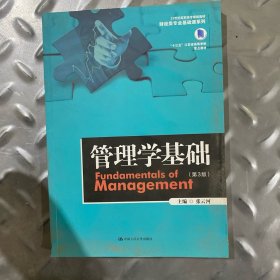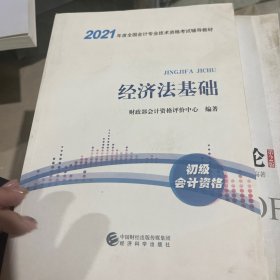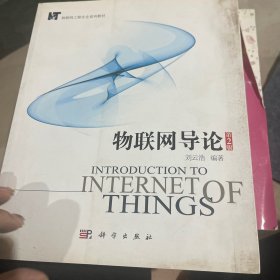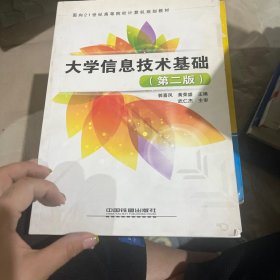
概率论与数理统计=Probability-and-Statistics:英文
¥ 0.01 九品
仅1件
河北保定
认证卖家担保交易快速发货售后保障
作者毛纲源、徐丽莉 著
出版社华中科技大学出版社
出版时间2017-12
版次1
装帧平装
货号3
上书时间2024-05-06
- 最新上架
商品详情
- 品相描述:九品
图书标准信息
- 作者 毛纲源、徐丽莉 著
- 出版社 华中科技大学出版社
- 出版时间 2017-12
- 版次 1
- ISBN 9787568028295
- 定价 39.80元
- 装帧 平装
- 开本 16开
- 纸张 胶版纸
- 页数 264页
- 字数 354千字
- 正文语种 简体中文
- 丛书 普通高等教育“十三五”规划教材 普通高等院校数学精品教材
- 【内容简介】
-
本书采用学生易于接受的知识结构方式和英语表述方式,科学、系统地介绍了概率论与数理统计中随机事件与概率、古典概率的计算、一维随机变量及概率分布、二维随机变量及其分布、随机变量的数字特征、大数定律和中心极限定理、样本及抽样分布、参数估计等知识。强调通用性和适用性,兼顾先进性。本书起点低,难度坡度适中,语言简洁明了,不仅适用于课堂教学使用,同时也适用于自学自习。全书有关键词索引,习题按小节配置,题量适中,题型全面,书后附有答案。
本书读者对象为高等院校理工、财经、医药、农林等专业大学生和教师,特别适合作为中外合作办学的国际教育班的学生以及准备出国留学深造学子的参考书。 - 【作者简介】
-
毛纲源,武汉理工大学资深教授,毕业于武汉大学,留校任教,后调入武汉工业大学(现合并为武汉理工大学)担任数学物理系系主任,在高校从事数学教学与科研工作40余年,除了出版多部专著(早在1998年,世界科技出版公司World Scientific Publishing Company就出版过他主编的线性代数Linear Algebra的英文教材)和发表数十篇专业论文外,还发表10余篇考研数学论文。
主讲微积分、线性代数、概率论与数理统计等课程。理论功底深厚,教学经验丰富,思维独特。曾多次受邀在各地主讲考研数学,得到学员的广泛认可和一致好评:“知识渊博,讲解深入浅出,易于接受”“解题方法灵活,技巧独特,辅导针对性极强”“对考研数学的出题形式、考试重点难点了如指掌,上他的辅导班受益匪浅”。
徐丽莉,北京师范大学珠海分校副教授,毕业于北京师范大学,美国德克萨斯理工大学统计学硕士。主讲概率论与数理统计、统计预测决策、企业统计学、线性代数等课程。在国内外权wei期刊发表中英文论文10余篇。 - 【目录】
-
Chapter 1 Introduction to Probability(1)
1.1 Sets and Set Operations(1)
1.2 Random Experiments(5)
1.3 Sample Space(6)
1.4 Events (Random Events)(8)
1.4.1 The concept of events (random events)(8)
1.4.2 Relations among events(10)
1.4.3 Operations of events(10)
1.5 Relative Frequency(14)
Exercise 1(15)
Chapter 2 Finite Sample Spaces(17)
2.1 Classical Probability Model(17)
2.1.1 Finite sample spaces(17)
2.1.2 Equally likely outcomes(19)
2.1.3 Classical probability model or equally likely probability model(20)
2.1.4 Counting methods(21)
2.2 Basic Properties of Probability(30)
Exercise 2(35)
Chapter 3 Conditional Probability and Independence(37)
3.1 Conditional Probability(37)
3.2 Product Rule (Multiplication Rule)(39)
3.3 Total Probability Law(41)
3.4 Bayes’Theorem(44)
3.5 Independent Events(46)
3.5.1 Independence of two events(46)
3.5.2 Independence of several events(49)
Exercise 3(51)
Chapter 4 Random Variables and Distributions(54)
4.1 Definition of Random Variable(54)
4.2 Discrete Random Variable(56)
4.2.1 Probability distribution of discrete random variables(56)
4.2.2 Some commonly used discrete probability distributions(59)
4.3 Cumulative Distribution Function(66)
4.3.1 Finding the cumulative distribution function of discrete variable(66)
4.3.2 Determining probability by the distribution function(68)
4.3.3 Finding the probability function of a random variable with cumulative distribution function(70)
4.4 Continuous Random Variable(70)
4.4.1 Continuous random variable and probability density function(70)
4.4.2 Some continuous probability distributions(73)
4.5 Finding the Distribution of Random Variable Function(81)
4.5.1 Finding the probability distribution of discrete random variable function(81)
4.5.2 Finding the p.d.f. of the function Y=g(X),where y=g(x) is continuous monotonic function(82)
4.5.3 Finding the p.d.f. of the function Y=g(X) where X is a continuous random variable(86)
4.5.4 Finding the distribution of the function Y=g(X) where X is a continuous random variable(87)
Exercise 4(88)
Chapter 5 Two-dimensional Random Variable(91)
5.1 Concept of Joint Probability Distribution(91)
5.1.1 Joint probability distribution for two discrete random variables(91)
5.1.2 Marginal distribution of discrete random variable(93)
5.1.3 Joint probability distribution function for two continuous random variables(98)
5.1.4 Marginal probability density function and conditional probability density(100)
5.1.5 The joint p.d.f. for two random variables(101)
5.2 Conditional Distribution(104)
5.3 Two Commonly Useful Distributions(108)
5.3.1 Two-dimensional uniform distribution(108)
5.3.2 Bivariate normal distribution(109)
5.4 Independence of Two Random Variables(110)
Exercise 5(115)
Chapter 6 Numerical Characteristics of Random Variables(118)
6.1 Expectation of Random Variable(118)
6.1.1 Expectation of discrete distribution(118)
6.1.2 Expectation of continuous random variable(119)
6.1.3 The expectation of function(120)
6.1.4 Properties of expectation(123)
6.2Variance of Random Variable(124)
6.2.1 Definition of the variance and the standard deviation(124)
6.2.2 Properties of the variance of random variable(127)
6.2.3 The expectation and variance of special probability distribution(129)
6.3 Covariance and Correlation(132)
6.3.1 Covariance(132)
6.3.2 Correlation coefficient(134)
6.4 Moments and Covariance Matrix(137)
Exercise 6(138)
Chapter 7 Law of Large Number and Central Limit Theorem(140)
7.1 Chebyshev’s Inequality(140)
7.2 Law of Large Number(142)
7.3 Central Limit Theorem(144)
Exercise 7(147)
Chapter 8 Basic Concept in Mathematical Statistics Introduction(148)
8.1 Random Sampling(148)
8.1.1 Population and sample(148)
8.1.2 Random sample(149)
8.1.3 Distribution of random sample(150)
8.2 Statistics(154)
8.3 Sampling Distribution(157)
8.3.1 The chi-square distribution(157)
8.3.2 The t-distribution(160)
8.3.3 The F-distribution(162)
8.4 Sampling Distribution Related to Sample Mean or (and) Sample Variance from Normal Population(165)
8.4.1 Sampling distribution related to sample mean or (and) sample variance from one normal population(165)
8.4.2 Sampling distribution related to sample mean of (and) sample variance from two normal populations(166)
Exercise 8(168)
Chapter 9 Parameter Estimation(171)
9.1 Point Estimation(171)
9.2 The Particular Properties of Estimators(172)
9.2.1 Unbiasedness(172)
9.2.2 Validity(173)
9.2.3 Consistency(175)
9.3 Moment Estimation and Maximum Likelihood Estimation(176)
9.3.1 Moment estimation(176)
9.3.2 Maximum likelihood estimation(177)
9.4 Interval Estimation of Mean and Variance for Normal Population(182)
9.4.1 The case for a single normal population(182)
9.4.2 The case for two populations N(μ1,σ21),N(μ2,σ22)(188)
Exercise 9(191)
Chapter 10 Hypothesis Testing(195)
10.1 General Concepts Used in Hypothesis Testing(195)
10.1.1 Statistical hypothesis(195)
10.1.2 Two types of errors(197)
10.1.3 Testing a statistical hypothesis(198)
10.2 Hypothesis Test for a Single Normal Population Parameter(201)
10.2.1 Hypothesis test for mean μ of a single normal population(201)
10.2.2 Hypothesis test for variance(205)
10.3 Hypothesis Test of Two Normal Population Parameters(208)
10.3.1 Hypothesis test for a difference between two normal populations(208)
10.3.2 Hypothesis test for two normal population variances(212)
10.4 The Relationship between Hypothesis Testing and Confidence Interval(215)
Exercise 10(216)
Answers to Exercises(219)
Appendix A Some Important Distributions(230)
Appendix B Statistical Tables(231)
Table B-1 Poisson Distribution(231)
Table B-2 Standard Normal Distribution(233)
Table B-3 t-Distribution(235)
Table B-4 χ2-Distribution(237)
Table B-5 F-Distribution(240)
点击展开
点击收起
— 没有更多了 —















以下为对购买帮助不大的评价